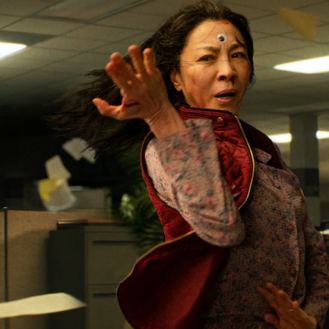By: Trevor Chartrand
Danish filmmaker/journalist Mads Brügger hits an incredible home run with his latest intense and heartbreaking documentary, Cold Case Hammarskjöld. The film sets out to explore a fifty-year-old unsolved mystery, which is intriguing enough, only to end up unravelling a much larger, gut-churningly appalling conspiracy.
The question that drives the film is simple. Back in 1961, the highly-progressive UN Secretary General Dag Hammarskjöld was killed in a suspicious plane crash. Targeted by many for his forward-thinking peace initiatives, there’s always been a question of whether the crash was orchestrated or accidental. When Brügger sets out to answer this question, his investigation is merely a small spark that ignites a raging inferno that puts the worst of humanity on display.
Structurally, this film is developed in a fascinating and unique way. Every documentary filmmaker is likely familiar with using cue cards during post-production in order narrow down countless hours of footage. Brügger begins his film at this cue card stage, with just himself and two typists in a small hotel room. As he dictates his findings to each typist, the film unfolds via flashbacks to relevant interviews and discoveries. And as the wall fills with cue cards, audiences literally get to see the structure of the film being developed before their eyes. This storytelling method is a fresh and creative way to avoid the dull trope of documentary narration.
With this hotel room setting though, Brügger also makes an odd and unsettling choice to recreate the conditions of an ominous scene from the past. The film investigates a sinister man named Keith Maxwell, who was known to wear a white suit and pose as a doctor. At the end of his life, Maxwell sat down in a hotel room to write a hyperbolic, Gilderoy-Lockhart style autobiography. Years later, Brügger rents out a room in the same hotel, and he wears a white suit while he dictates his story to a typist. If the filmmaker is trying to draw a connection between himself and the antagonist of his story, the legitimacy of his narrative suddenly comes into question. When Maxwell wrote in that hotel room, he was spinning exaggerated yarns that stretch the truth – by wearing the same clothing and dictating his story in the same location, is Brüger suggesting his story has been fictionalized as well? The setting could just be a creative flourish, but the choice to equate himself to the antagonist of his narrative sends mixed messages to say the least. Not to mention the fact that the more we learn about Maxell and his atrocities, the more uncomfortable it gets to watch the filmmaker dressed up like him.
Now despite all that darkness, Cold Case Hammarskjöld is not without levity and deadpan humor. Brüger appears to be self-aware of his own folly, and he gives the film plenty of room to breathe. While digging for the wreckage of the crashed plane, for example, the filmmakers need to take frequent breaks due to blisters on their hands. After estimating the plane pieces would be buried forty meters down, the two of them can’t even get one meter deep before becoming too sore to carry on.
When push comes to shove, Cold Case Hammarskjöld is an incredible thriller and a downright well-told story. The alleged conspiracy is compelling and horrific, and by the end of the film it will be difficult to look away. This compelling little documentary is an eye-opening case study of the dark side of the human condition, and its lessons should not be ignored.
**********
Do You Tweet? Follow These Tweeple:
Trevor Chartrand: @OhHaiTrebor





Be the first to comment